Russia’s Frighteningly Fascist Youth
Russia’s Frighteningly Fascist Youth
A new generation of Russians glorifies war, death, and Vladimir Putin.
Nineteen-year-old Alina lives in Nizhny Tagil, a blighted industrial city in Russia’s Ural region. When she’s not studying for her degree in graphic design, she does all the things anyone else of her age might. She hangs out with her boyfriend, Sergey, and goes to the local cinema to watch the latest Hollywood blockbusters, now pirated to circumvent Western sanctions. They down fearsome quantities of alcohol in local bars. She dreams of moving to Moscow to work in the capital’s high-tech industry.
Nineteen-year-old Alina lives in Nizhny Tagil, a blighted industrial city in Russia’s Ural region. When she’s not studying for her degree in graphic design, she does all the things anyone else of her age might. She hangs out with her boyfriend, Sergey, and goes to the local cinema to watch the latest Hollywood blockbusters, now pirated to circumvent Western sanctions. They down fearsome quantities of alcohol in local bars. She dreams of moving to Moscow to work in the capital’s high-tech industry.
Alina, like most young people in Russia, is addicted to her smartphone. She has uploaded all the trappings of ordinary teenage life to her page on VK, Russia’s version of Facebook. She shows off photos of beach vacations in Egypt and shares videos about nail design, fashion, movies, and TV. She is a big fan of Maisie Williams’s Game of Thrones character, whom Alina calls a “fierce” role model of modern womanhood.
But since Feb. 24, 2022, when Russia sent a massive invasion force into Ukraine, Alina’s VK page has become a different world. Gone are the fripperies of consumerist life. Like hundreds of thousands of other Russians, Alina has joined dozens of government-run and -promoted online groups with names like “REAL Ukraine,” “Antiterror Z,” “Z for Victory,” “The Russian Spring,” and “Ztrength in Truth.” Whether holed up in her bedroom or posting from class, the back seat of a bus, or a bar while chatting with her friends, Alina’s thirst for the world of Russia’s war against Ukraine seems unquenchable.
Alina began by sharing posts from the war groups she had joined. In this conspiracy-fueled world, new “truths” about alleged Ukrainian depravities are uncovered every day, Russia is under constant threat from shadowy U.S. and NATO forces, and Ukraine has to be destroyed to save itself—and Russia—from a spectral Nazi threat. Alina’s VK wall is packed with apocalyptic images of a burning White House in “Fascington, DC,” Orthodox priests blessing the troops at the front, and of Russian President Vladimir Putin depicted as a “savior.” In this alternate reality, a sacred Russia is surrounded by enemies bent on its total obliteration.
Adapted excerpt from Z Generation: Into the Heart of Russia’s Fascist Youth, Ian Garner, Hurst Publishing, 256 pp., £25, May 2023.
As the war in Ukraine unfolded, Alina began to add her own commentary. “Khokhols are assholes,” she wrote, using a derogatory term for Ukrainians. “The white of our Russian flag means cleanliness”; “Ukrofascists, you’re RABID DOGS”; “If I was [in charge] you fuckers would get what you deserve”; “Ukrainians, better not talk in Ukrainian, it just sounds stupid, like fucked up Russian.” Putin, Alina posted, is “a gift from God. We are all Putin.” Alina is not merely parroting the propaganda of her own government and the social media groups she has joined. She has learned to speak a language of violence—a language of Russian fascism.
Alina is not alone. Thousands of Russians are today participating in this public display of hatred and warmongering on the Runet—the Russian-language internet, which has its own social networks, search engines, blogging sites, and a wide range of apps. Young Russian internet users flaunt their rage, driving each other into an anti-Ukrainian frenzy as news of—or, rather, conspiracy theories about—the war consumes every part of Russian society. Ukrainians are attacked as subhuman; the latest government narrative about Western evil is repeated ad nauseam; Putin and God are praised for leading Russia into Ukraine to destroy the fascist threat; and dead Russian soldiers are lauded as saintly martyrs.
A boy wearing a T-shirt with the letter “Z,” the tactical insignia of Russian troops in Ukraine, and holding a flag of the self-proclaimed Donetsk People’s Republic, the eastern Ukrainian breakaway region, stands at the entrance to the embassy in Moscow on Sept. 23, 2022. Alexander Nemenov/AFP via Getty Images
Young Russian zealots like Alina are something new in the post-Soviet space. For Alina, publicly performing aggressive nationalist language, sharing conspiratorial memes, and demonstrating support for Russia’s war in Ukraine is heartfelt. For her, Russia deserves to be a great nation but is surrounded by threats. Alina is rapidly losing interest in Western movies and TV as she spots ever more terrifying conspiracies hidden within the Trojan horse of American culture. She, and everyone younger than her, may only ever know a Russia almost completely cut off from the West—a Russia driven by messianic, apocalyptic, and spiritual goals of Eurasian domination. This is a Russia they want to immerse themselves in, a Russia that promises more profound, spiritual rewards than the superficial but dangerous lifestyle of the “woke” West. This is a fascist Russia.
Russia in 2022 seems to embody the darkest elements of 20th-century fascism. Led by a supposedly miraculous leader, it is a place where an array of ahistorical and quasi-religious thinking, imagery, and myths support a total militarization of the state, the reconquest of a lost empire, and a mission to wipe out a racial enemy—the Ukrainian people. Denunciations and free-speech crackdowns are becoming more public and more violent. The last independent media are gone, and everybody lives in fear of arbitrary arrest and beatings, afraid to speak their mind on what is still not officially called a “war.” One acquaintance tells me his elderly, decrepit mother was arrested by the FSB—today’s incarnation of the notorious KGB—in the first week of the Ukraine war for sharing a social media post merely reporting on an anti-war protest. She had not even attended the event or encouraged others to do so.
The nation is fighting a war of colonial aggression to control what has become known as russky mir—the “Russian world”—an illusory sphere of control over all things culturally, linguistically, or otherwise deemed to be Russian. That means eliminating Ukraine. The culture of multiethnicity and humanism that, at least superficially, governed Soviet life has disappeared. Former President Dmitry Medvedev publicly called for the erasure of Ukraine and Ukrainians: “I hate them. They’re bastards and freaks. They wish death on us Russians. For as long as I live I’ll do everything I can to make sure they disappear.” Medvedev’s words are echoed by state propagandists online and in broadcast media: “Military success … won’t be the final solution. Denazification of Ukraine is achievable only by erasing the history of its last 30 years.” A cultural genocide—the erasure of Ukrainian language, culture, and tradition—is already mirroring the physical genocide carried out in places like Bucha, Ukraine.
Visions of territorial expansion are fueled by sweeping allusions to grand historical empires. Just as Nazi leader Adolf Hitler dreamed of Lebensraum for Aryan Germans, so Putin and his propagandists speak of recreating the lost empires of the past. On occasion, they even promise to conquer Europe militarily and China and the United States economically. Needless to say, these visions of conquest, sacrifice, and nationhood that drive this project are inconsistent, illogical, and ahistorical, more fairy tale than reality.
Russia is awash with images of uniform masculinity, religiosity, and nationality conjured up as the war has spun out of the Russian military’s control. Images drawn from the nation’s Soviet and tsarist pasts, mixed with religious symbolism, are embroidered on soldiers’ jackets, flown from cars, and daubed on classroom windows. “Z,” the government’s cryptic symbol of war, is everywhere. Military parades and “spontaneous” pro-war demonstrations are on television. Endless memes, videos, and slogans that hail Russia’s military past and present are plastered all over the internet. The bricolage is as incongruous and ahistorical as the imperial and religious posturing that underpins Putin’s public justification for the Ukraine invasion.
Meanwhile, in paramilitary youth groups for children, in compulsory training in schools and universities, in the constant diet of films and shows about wars past and present, and in military parades and through conscription, young Russians are being prepared to play out the nation’s historically fated role as the savior of humanity. Anybody younger than 19-year-old Alina will grow up with the oxymoronic phrase borba za mir—“battle for peace,” a Soviet-era slogan now making an unironic comeback—ringing in their ears. In today’s Russia, war is not a last resort. It is an essential part of life, and it is paradoxically essential for peace.
Children climb atop a tank as they tour Patriot Park, a sort of military Disneyland outside Moscow aimed at showcasing Russia’s military might, on July 24, 2022. Natalia Kolesnikova/AFP via Getty Images
The term “fascism” may have a vexed history, but this paradox—war is peace—is central to its political philosophy. Umberto Eco, the Italian philosopher, noted that one of the key facets of fascism was the constant war that had to be waged to prove that the nation was always on the path toward a cleansing regeneration. “Pacifism is bad; life is permanent warfare,” he wrote in the mid-1990s. But why should Putin, a 21st-century autocrat seemingly without real internal threats to his power and ruling a country fueled by income from abundant natural resources, be attached to such a vision?
The British scholar Roger Griffin argues that fascism seeks to regenerate the nation through war. It aims to destroy elements of modernity in order to create a new world order in response to the “degenerative forces of conservatism, individualistic liberalism, and materialist socialism.” The obliteration of morally degenerate enemies and moral orders by an ethnonationalist society totally dedicated to this goal is meant to bring about a new era in history. That new era, however, only ever recreates a supposedly lost past: a time of mythical, wondrous harmony when a nation and its subjects were culturally and militarily powerful. For Russia, this fantasy era picks apart and reassembles chunks of the medieval, tsarist, and Soviet past, where symbol and myth transcend historical reality. The longed-for utopia can only ever exist as fictional spectacle, performed for and by the public. It is pure fairy tale.
Fascism, Griffin tells us, thus perpetually promises to replace mediocrity and weakness with “youth, heroism, and national greatness.” Hitler’s Aryan Übermensch was meant to represent an ordered, purified ideal free of disease, weakness, anarchy, and decadence. The fascist project focuses all its military, religious, and cultural energy on achieving this regeneration—even if that means sacrificing its own people, destroying its economic resources, or acting irrationally in any other way. Fascist regimes have to perpetuate violence so that they can drag society into a constant cleansing—the constant perpetuation of violence against an enemy of choice. This is Putin’s Russia today.
If we are to understand Russian fascism, we must look to how the state has fed this ideology to its youngest generations and how they engage with and spread dangerous, mythical visions of global turmoil and national regeneration. Putin’s Russia is a flimsy, Potemkin state. His people have seen few gains after 22 years of his rule. With no real achievements bar securing a small elite’s wealth and position, Russia’s rulers have to look beyond mass material gain to satiate a population hungry for self-esteem and respect.
A teenager examines a machine gun, developed in the Soviet Union, at the Guns Dungeon Interactive Museum in Moscow on March 18. Vlad Karkov/SOPA Images/LightRocket via Getty Images
Putin’s Russia has bolted the fascist dream onto a distinctly modern popular culture. Modern fascist culture, Danish scholar Mikkel Bolt Rasmussen argues, spreads itself not through formal political parties and institutions—21st-century Nazi parties or Brownshirts—but through popular and internet culture. There are no closed doors beyond which fascist ideology cannot reach. Parties are no longer needed to create mass movements when social media groups can be created, joined, and eviscerated at the click of a mouse. Fascist governments and their subjects continually construct and reconstruct themselves—and do the opposite to their enemies—online and in “real life.” In online spaces where performance and public display easily overpower everyday reality, fascism is apt at staging what Bolt Rasmussen calls “a simulacrum of society.”
Even the apathetic and resistant are inevitably drawn in. Night or day, Alina can dip her toes into the warmth of collective belonging and the glamour of the fascist spectacle. The fascist rally—glittering, alluring, ordering—is always accessible with the stroke of a thumb. The theatrical, always-on spectacle of social media forces individuals to constantly engage with, and define themselves in relation to, political performance.
Online comments or memes that support war crimes are not merely throwaway ideas. Even those spread by the government’s bots shape a world in which those crimes are normalized and encouraged, making their real perpetration more likely. An atomized population amped up by clickbait and social media pizzazz gives way to a snowballing torrent of fascist resentment and utopianism. In turn, the synthetic worlds of narratives constructed on social media and in popular culture inform real policy decisions: The fictional, peripheral, ephemeral, and chaotic are made reality. Idle online chatter of genocide and Ukrainian-baiting memes become real.
It is in an often contradictory, pantomimic, and ghoulish popular and youth culture that Russia’s young people have spent over 20 years encountering and re-encountering the state’s ideological urges. Within this space, mythical thinking easily elides with snippets of external reality to produce a distinctly modern, Russian fascism. Weak in ideology and inconsistent to the extreme it may be, but Russian fascism is in there—detectable in the ambitions of the state and in the minds of many of its subjects.
A man rides a unicycle past a house decorated with a mural that depicts members of the Russian Patriotic Youth movement Yunarmiya in Moscow on Aug. 6, 2022. Yuri Kadobnov/AFP via Getty Images
And it’s there on social media. If there is anything that modern politics in the West—the phenomena of Donald Trump, Brexit, the anti-vax movement—has taught us, it’s that reality is shaped on social media. Social media is real life. Alina’s online self is her real self.
Putin has rarely appeared to be a consistent ideologist. He often rifles through Russian nationalist philosophical writings, slapping together ideas and contextless quotes in his speeches, making definitive claims then dropping them in favor of striking a deal to make some quick cash or humiliate his Western opponents. He—along with a nostalgic population—waxes lyrical about the Soviet era’s stability, security, and culture.
In a nuanced treatment of the question of Russia’s fascism published the year before its invasion of Ukraine, Marlène Laruelle asserted that “Russia has no ideology of racial destruction or domination that would allow for a parallel with Nazism. Nor does it display an ideological doctrine forcibly inculcated in the population, successful mass mobilization around a project of utopian regeneration, a high level of repression, or dictatorial functioning.” In 2022, none of that holds true. Russian society, especially online, has been suffused with an ideology of destructive war motivated by racial animus and Russian exceptionalism. The ideology is contradictory, weak, and illogical, but it is constantly transmitted in popular culture.
The goals relate to morality and psychology—to inner transformation—as much as to geopolitics. To achieve them requires internalizing a paranoid, ultranationalist worldview; the old self must be rewritten by the state’s political culture as society is cleansed of everything non-Russian. This internal battle is reflected externally in a racist, imperialist war against the ethnic Other in Ukraine. Russian messianism—a trope familiar from history that claims Russia has a special role in dragging the world to utopia through destruction, martyrdom, and sacrifice—is married to the fascist idea of self and societal cleansing.
Today, these fascist ideas are being raised openly not just in the dark corners of the Runet but at the center of national political discourse. Not every Russian might be rushing to open the state’s newspapers or switch on the nonstop propaganda spewed by state television channels since the start of the Ukraine war. But in the maelstrom of the Runet, ideas quickly filter from the center to the periphery and back again. Fascist thinking radiates outward from the Kremlin’s army of fellow travelers and media pundits, who present extreme ideologies in bite-size chunks to a social media generation.
All this content is unavoidable. If you choose not to consume it, your friends and family will drip it into your smartphone through their own social media feeds. To oppose is to fail to be sufficiently Russian—and therefore, by default, to be a traitor. I send Alina a news report about a 30-something doctor who left Russia to assist Ukrainian refugees in Poland, and I ask her: “What do you think about this? Isn’t she just helping people out?” Alina’s reply is unequivocal: “She’s a traitor. Don’t come back.” The world in which she and so many other Russians have immersed themselves permits no nuance, flexibility, or comprehension of alternate views.
Teenagers attend a commemoration ceremony for the 20th anniversary of the Nord-Ost hostage standoff by Chechen rebels near the Dubrovka Theater in Moscow on Oct. 26, 2022. Yuri Kadobnov/AFP via Getty Images
In April 2022, Alina re-shared a video of a group of Russians in Kursk cheering their troops off to the front. In the video, vehicles are marked with the Latin “Z” and “V” letters that depict support for the war. Their owners stand by the roadside, waving Russian flags and cheering as a convoy of Russian trucks and military equipment rolls past. A few seconds into the video, a 30-something man wearing a retro Soviet sports jacket is captured in the camera’s gaze. He throws up his right arm in a Nazi salute. Further down the crowd, a small boy of no more than 5 or 6 in combat fatigues clings to his father, who lifts his arm in another Nazi salute. The boy reaches his right arm outward in imitation. Like Alina’s improvised social media posts, these figures are doing something more than merely displaying patriotism or turning up at a rally because they have to. They are embracing a collage of symbolism that denotes their allegiance to the Soviet past (the Soviet-style jacket), the militaristic present (the combat fatigues), and an ideology of racial superiority (the Nazi salute and Z/V markings that symbolize a war of ethnic destruction). The older generations are encouraging their children to fit into this mash-up reality.
Russian audiences lapped up the video, expressing their support by leaving comments on Telegram channels with hundreds of thousands of users: “Guys, just you keep holding firm!”; “Death to the UkroNazis”; “May God save you.” The symbols and behaviors of Russian fascism are amplified again and again by repetition—including the theatrical parade of waving soldiers, the crowd’s performance of salutes and public fealty, the original poster’s performance of recording and sharing the video, the Telegram channels’ further performance of good citizenhood by re-sharing it, and users’ comments on those re-shares. Each invocation is unprompted, or only covertly prompted, by the state. In this small but telling example, we can glimpse the whole performative enactment of modern Russian fascism.
But don’t mistake the almost vulgar banality of these performances for a lack of meaning. This is a culture that is preoccupied with death. Whether it’s about killing off “non-Russian” elements inside the country, sending the country’s youth to die in wars abroad, or butchering civilians in genocidal military campaigns, death is glorified. And that glorification isn’t confined to state institutions, state politicians’ speeches, or state media. The Russian state has spent 20 years forming a national identity fixated on sacrifice and death. Today, Alina and her fellow believers are bubbling over with revolutionary zeal. They are ready to “cleanse” themselves, their children, and their neighbors through acts of violence—and death.
Books are independently selected by FP editors. FP earns an affiliate commission on anything purchased through links to Amazon.com on this page.
Ian Garner is a historian and translator of Russian war propaganda.
More from Foreign Policy
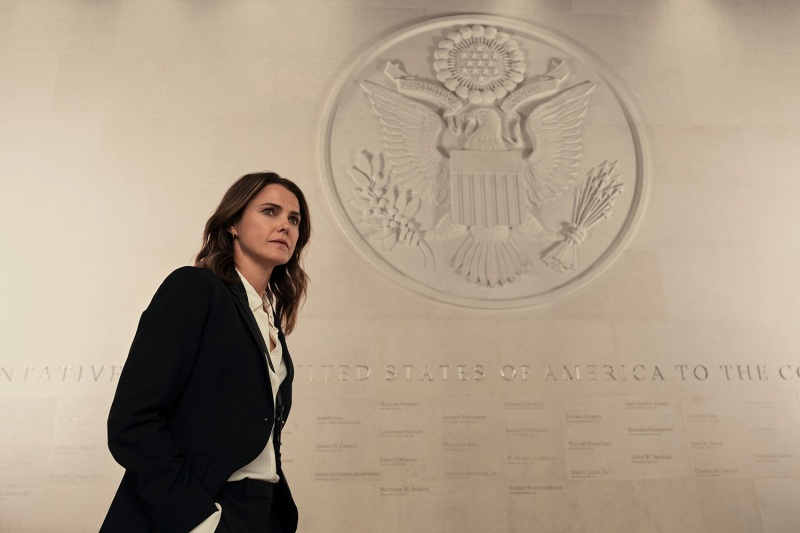

At Long Last, the Foreign Service Gets the Netflix Treatment
Keri Russell gets Drexel furniture but no Senate confirmation hearing.
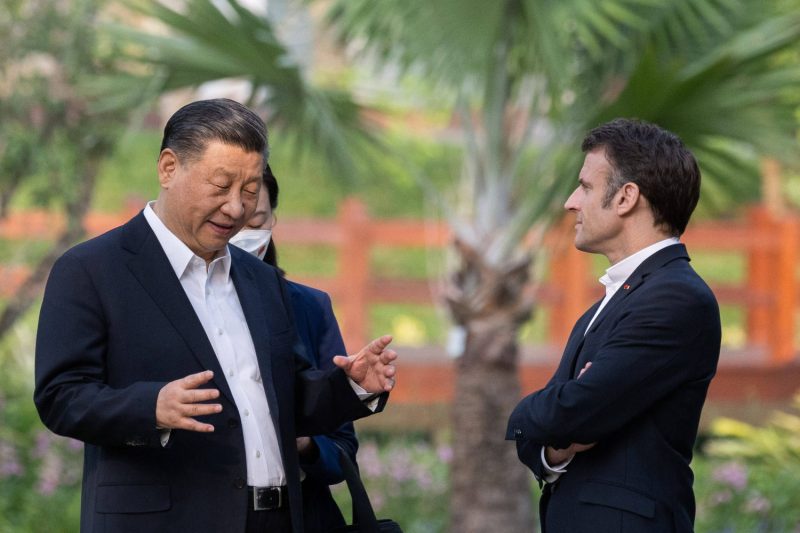

How Macron Is Blocking EU Strategy on Russia and China
As a strategic consensus emerges in Europe, France is in the way.
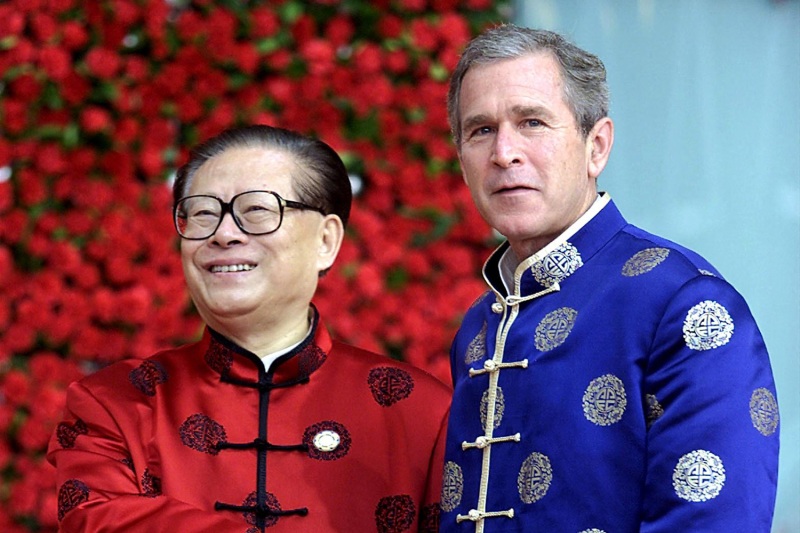

What the Bush-Obama China Memos Reveal
Newly declassified documents contain important lessons for U.S. China policy.
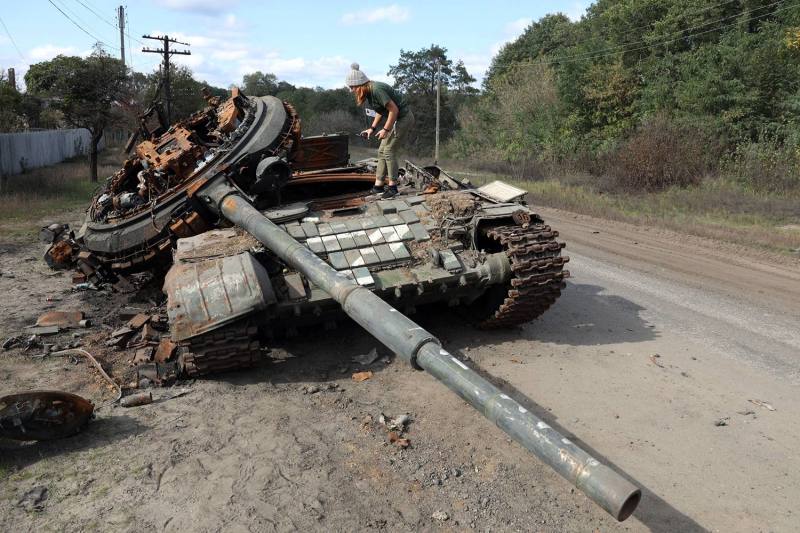

Russia’s Boom Business Goes Bust
Moscow’s arms exports have fallen to levels not seen since the Soviet Union’s collapse.
This article has been archived for your research. The original version from Foreign Policy can be found here.


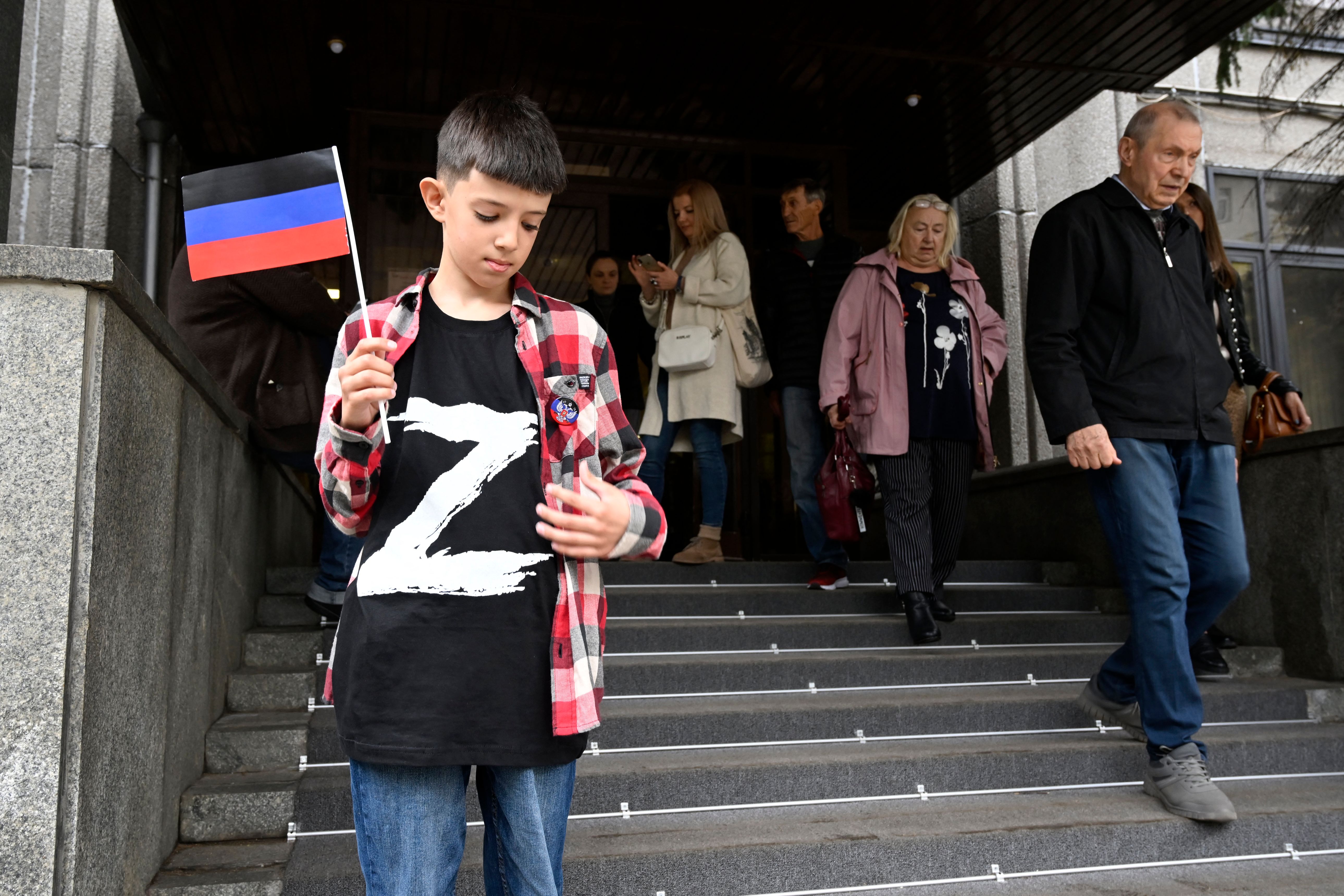
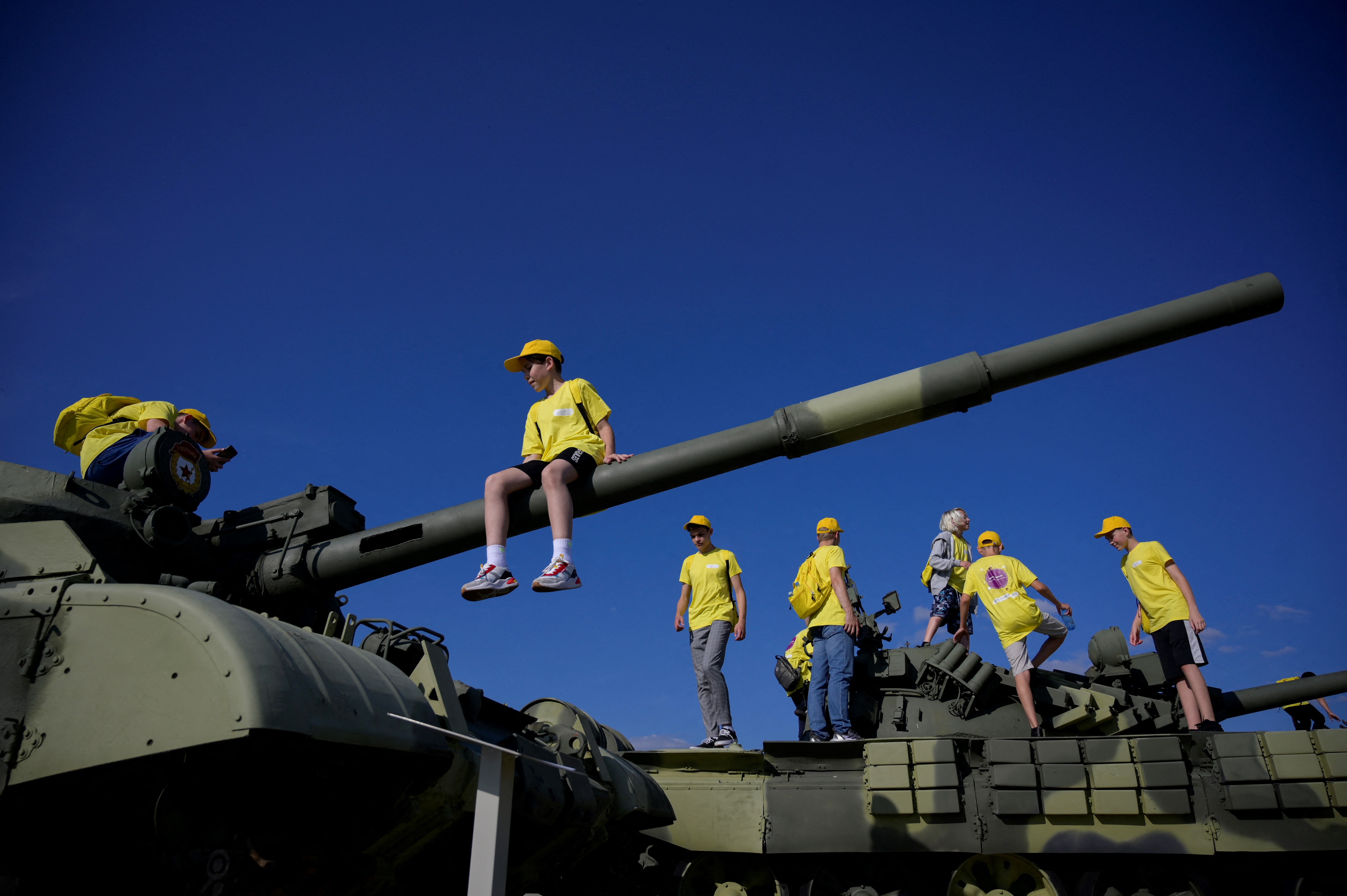
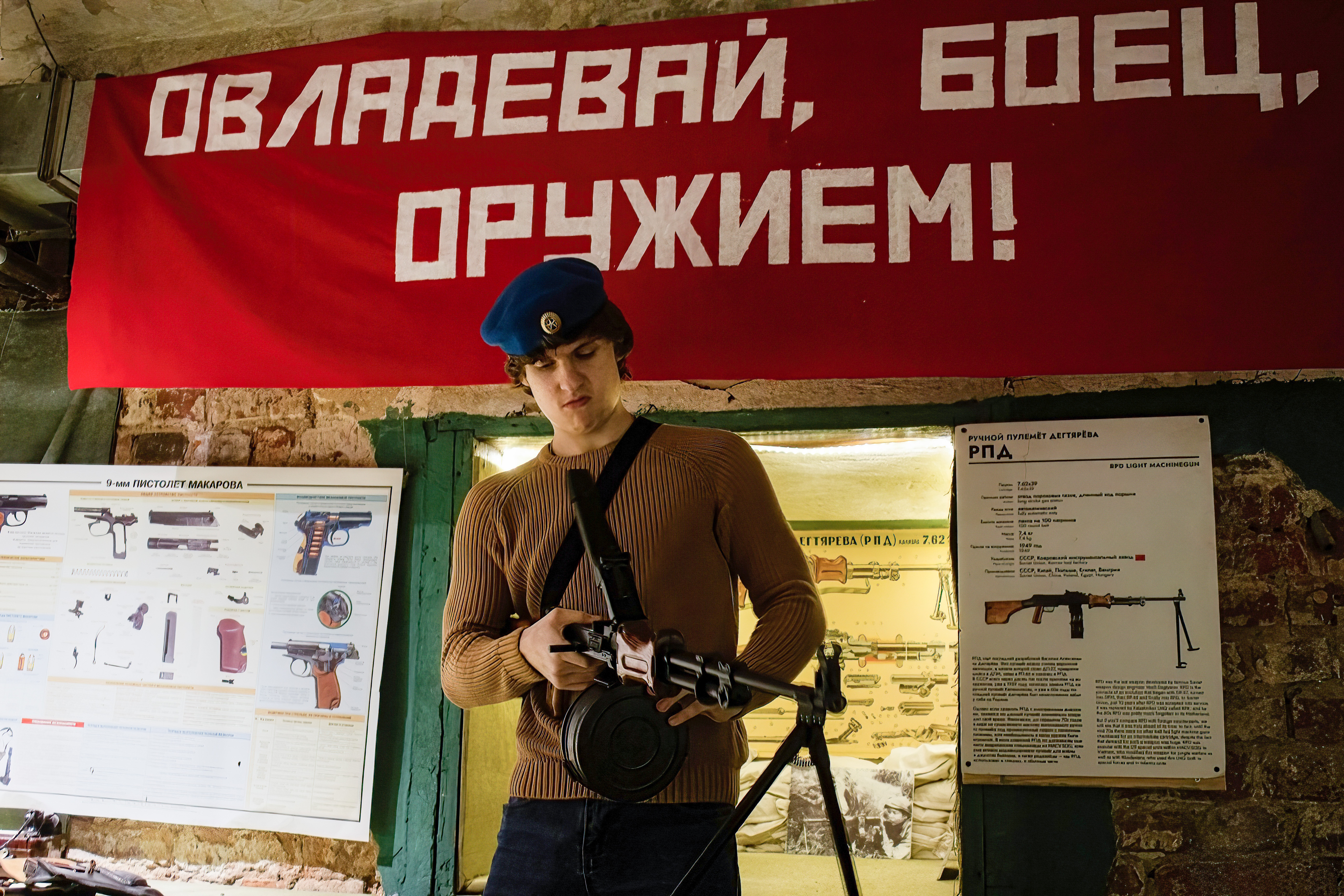
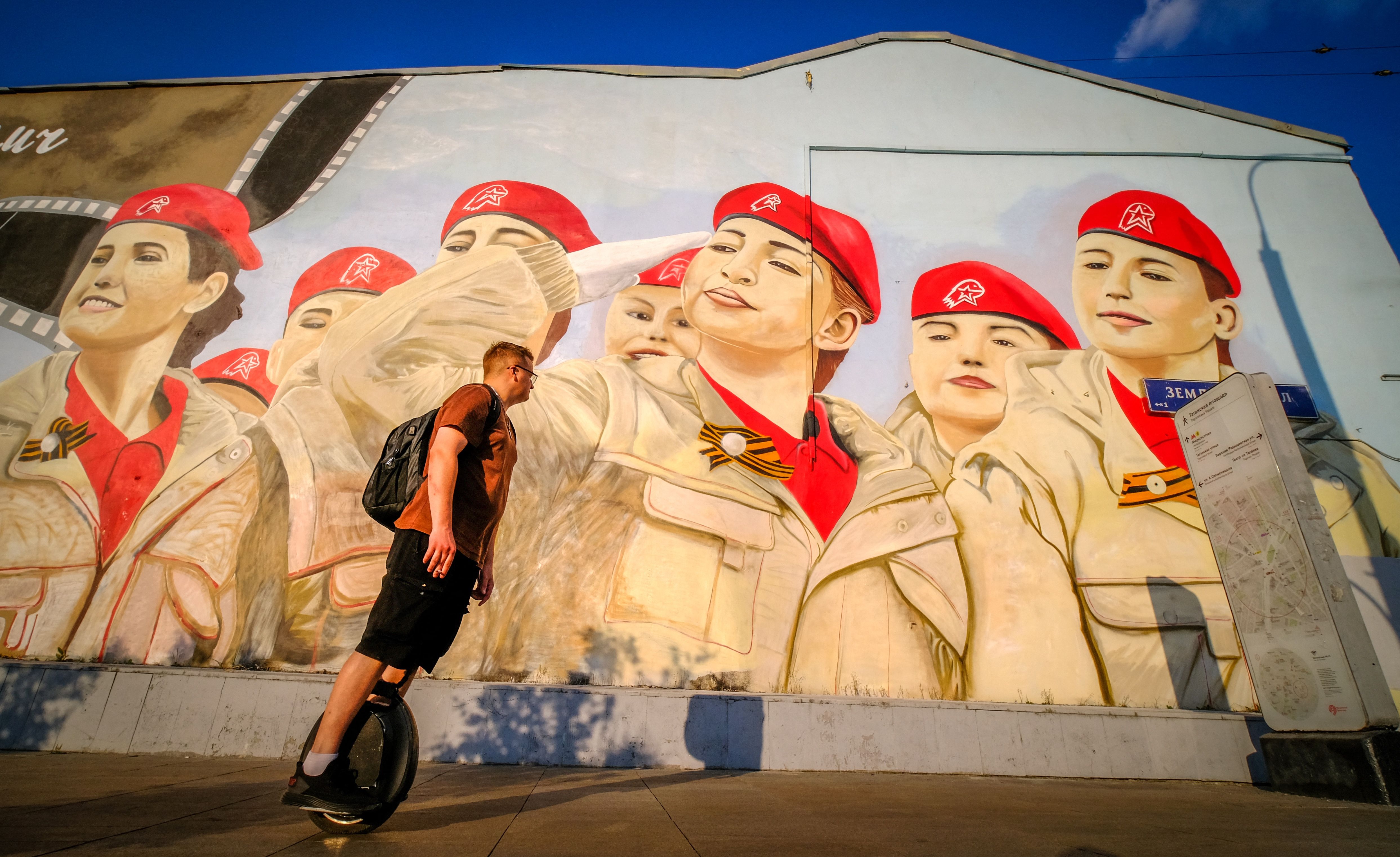


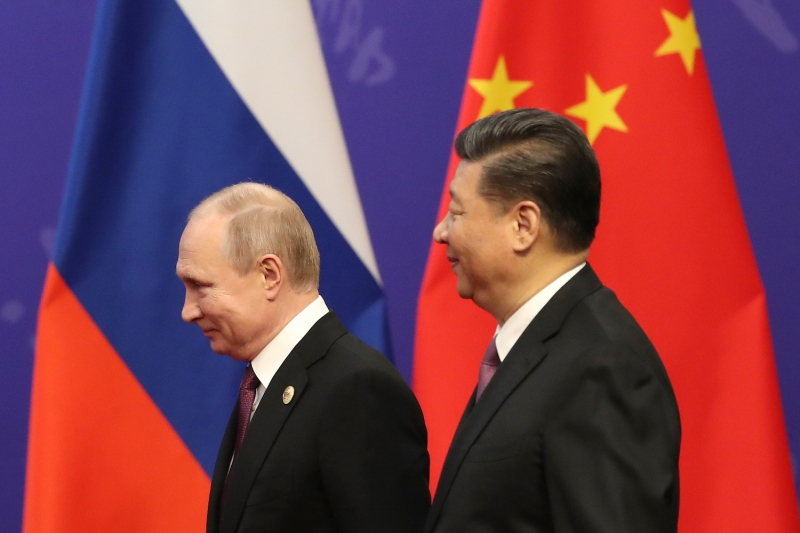
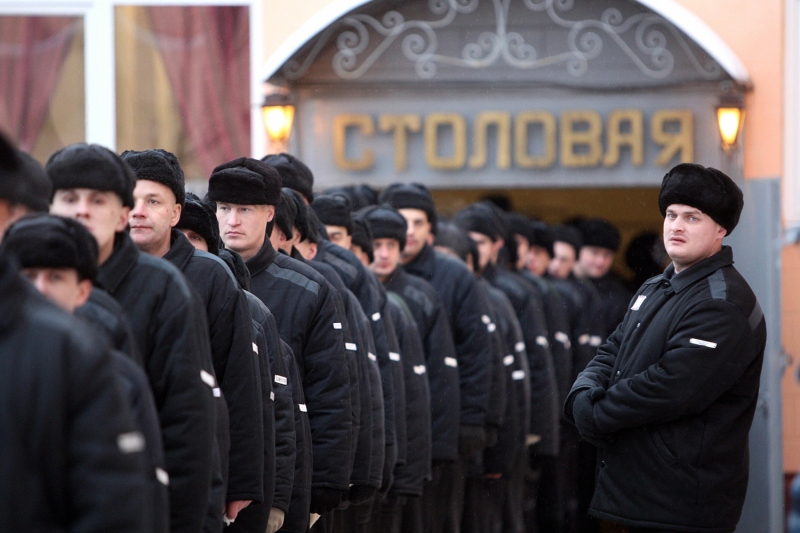


Join the Conversation
Commenting on this and other recent articles is just one benefit of a Foreign Policy subscription.
Already a subscriber? .
Subscribe Subscribe
View Comments
Join the Conversation
Join the conversation on this and other recent Foreign Policy articles when you subscribe now.
Subscribe Subscribe
Not your account?
View Comments
Join the Conversation
Please follow our comment guidelines, stay on topic, and be civil, courteous, and respectful of others’ beliefs.